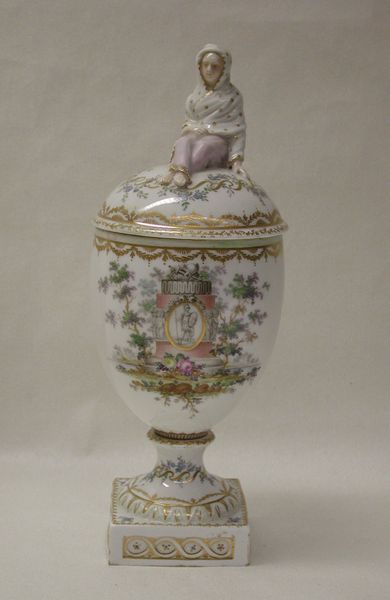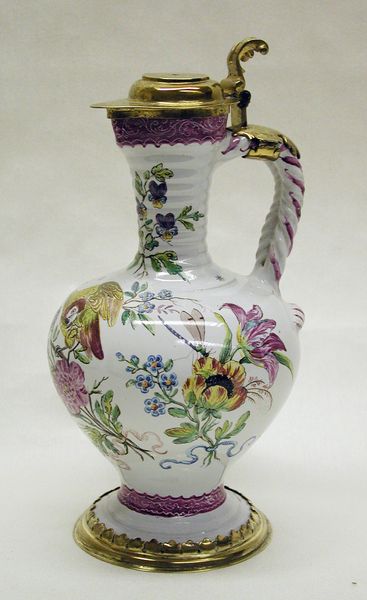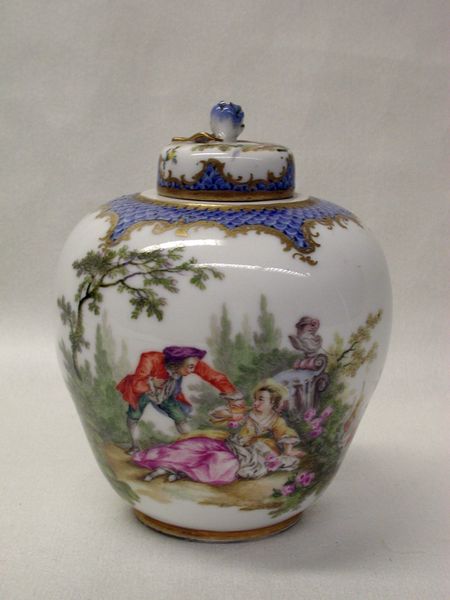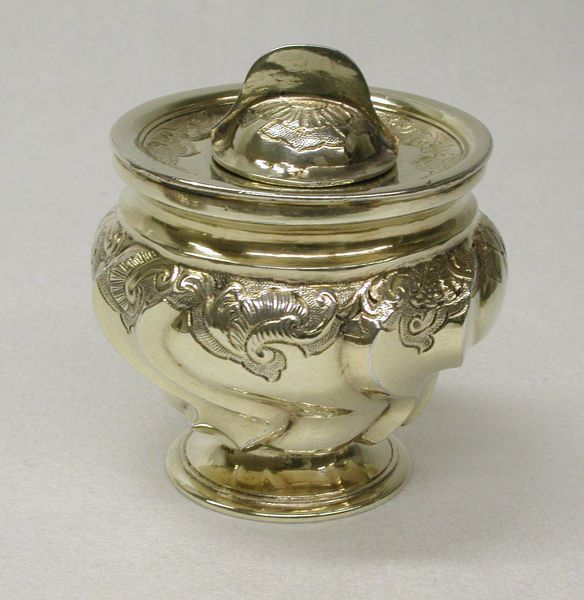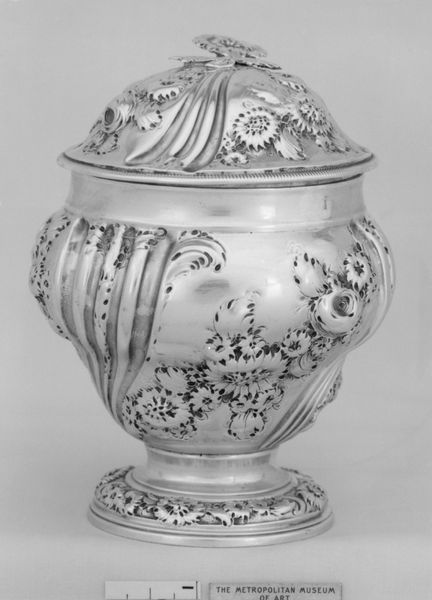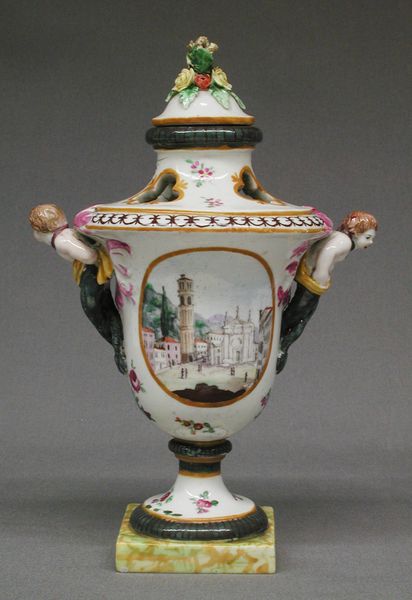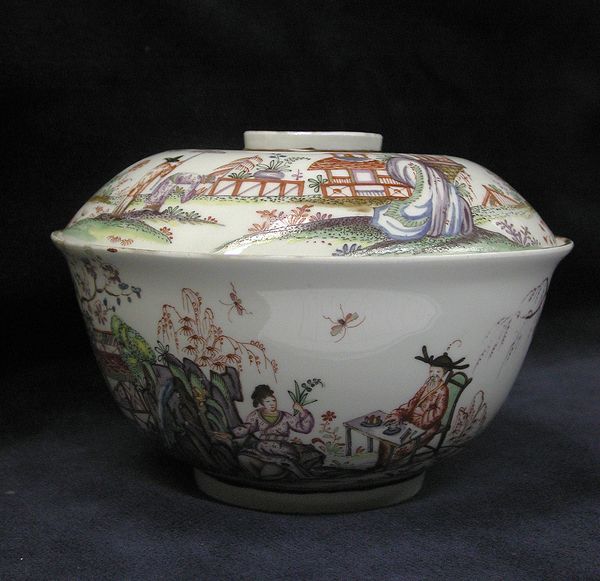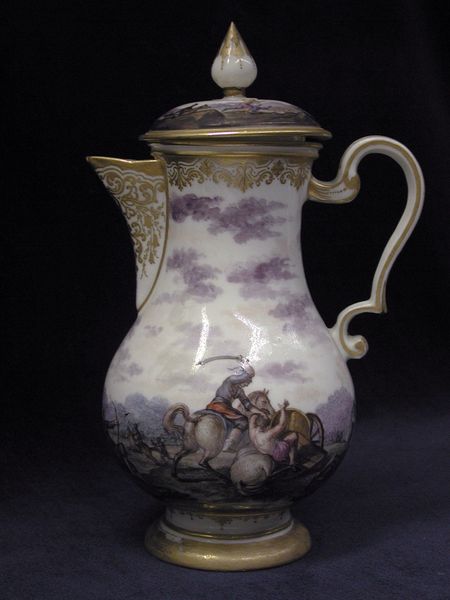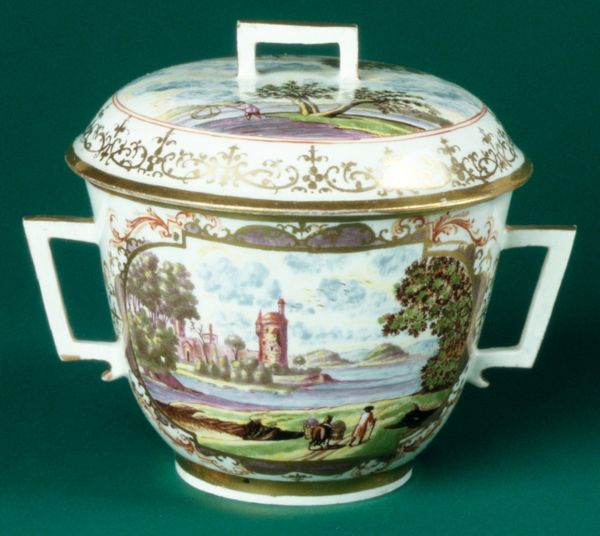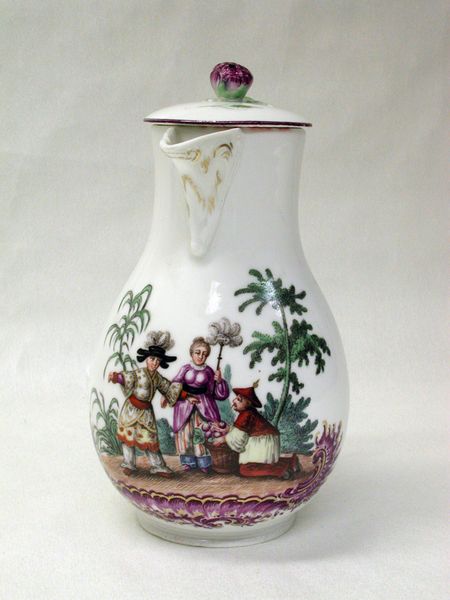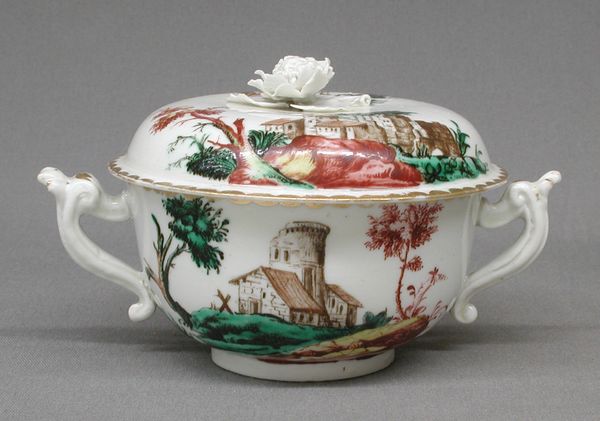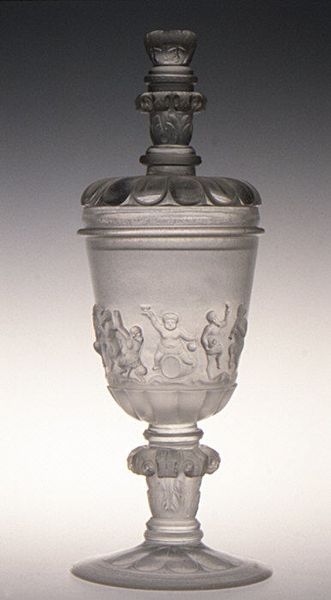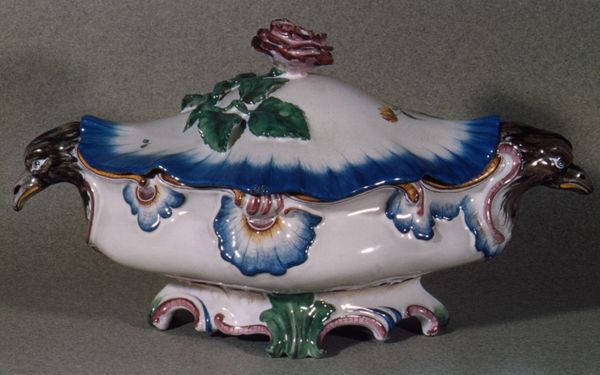
ceramic, porcelain, sculpture
#
landscape
#
ceramic
#
porcelain
#
figuration
#
sculpture
#
ceramic
#
decorative-art
#
rococo
Dimensions: Height: 12 in. (30.5 cm)
Copyright: Public Domain
Curator: Good morning, today we’re looking at a piece of decorative art from the Metropolitan Museum, a "Potpourri Vase" made between 1761 and 1771 by the Fürstenberg Porcelain Manufactory. Editor: My goodness, that’s quite a bit of detail crammed onto a porcelain surface. It looks rather opulent, but also delicate, almost too elaborate to be functional. Curator: Precisely. This vase epitomizes Rococo style, which favored asymmetry, lightness, and decorative excess. Consider the interplay of material: porcelain sourced from raw materials shaped through intensive labor to achieve its delicate, refined appearance, decorated by landscape and figure scenes. Editor: I'm captivated by the way the porcelain's smoothness is broken by the intricate pierced work around the lid and base. The play of light and shadow it creates emphasizes the vessel’s voluptuous form and delicate color palette. Did they really expect someone to put potpourri in there? Curator: Potpourri was fashionable among the elite. Scent, like ornamentation, signaled status and cultivated refinement. It’s not just the physical object, but its purpose within a lifestyle that reveals the values of the period, this period’s material culture and aspirational lifestyles. Editor: Yes, and what an interesting counterpoint it is. Look at the bucolic scenes painted on the body. These little landscapes pull the eye in, with all the small brushstrokes depicting everyday life with nature idealized in form and color. What do you think someone from the court would have been thinking of during its creation? Curator: To be frank, perhaps little of the labor that enabled its production. The appeal of porcelain as opposed to its functionality lay as the ability of manufacturers to replicate new European and Chinoiserie-styled shapes across Europe as emblems of cultural refinement for the consumer market, supported through mining and manufacturing trades of their respective locales. Editor: Fair enough! The shape feels so important as this artifact communicates court values while taking an intentional shape as to display status, power, and beauty to onlookers. Curator: A demonstration of wealth crafted by laboring hands. What a tale of art as an object! Editor: A harmonious combination of both. What more can we ask?
Comments
No comments
Be the first to comment and join the conversation on the ultimate creative platform.
